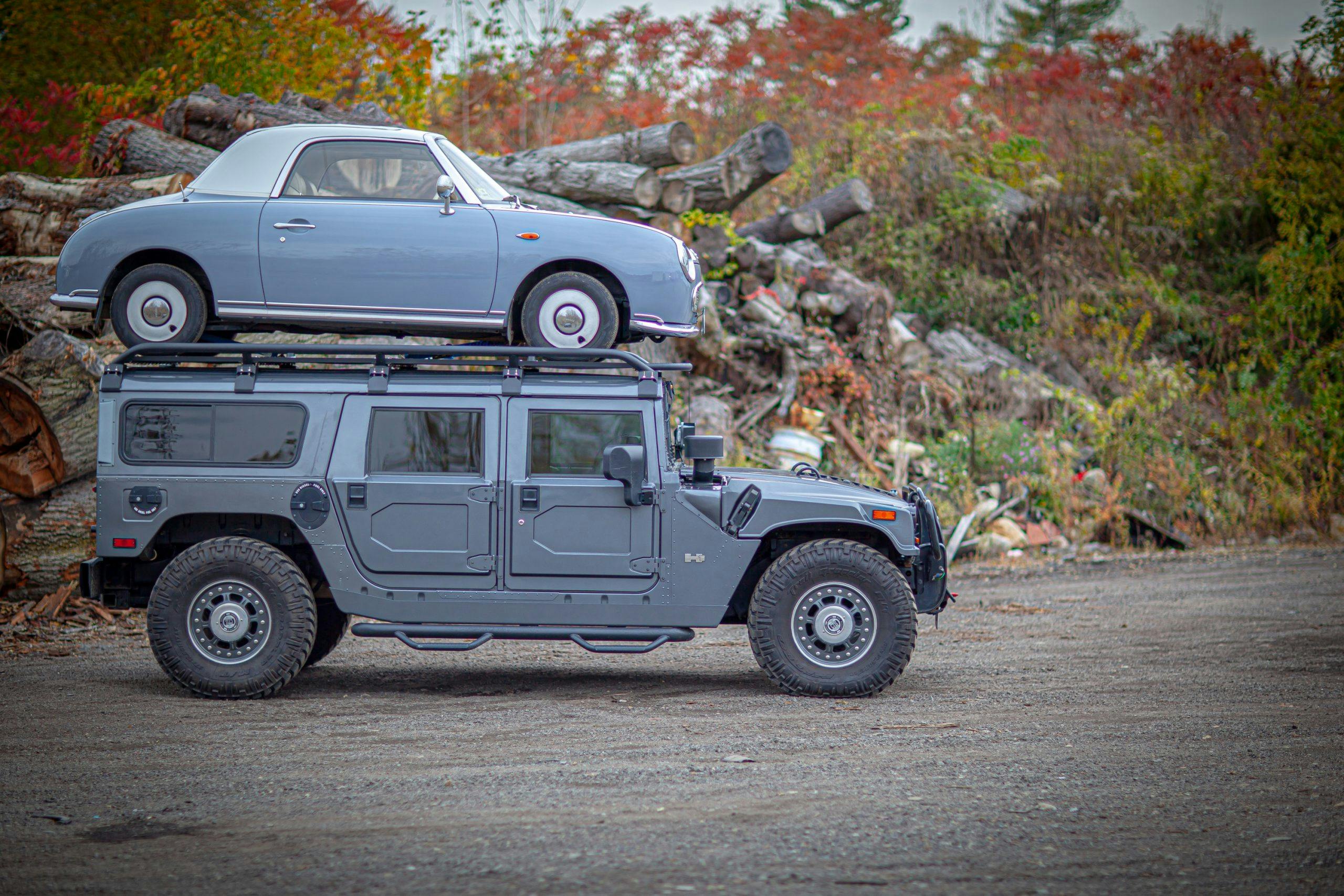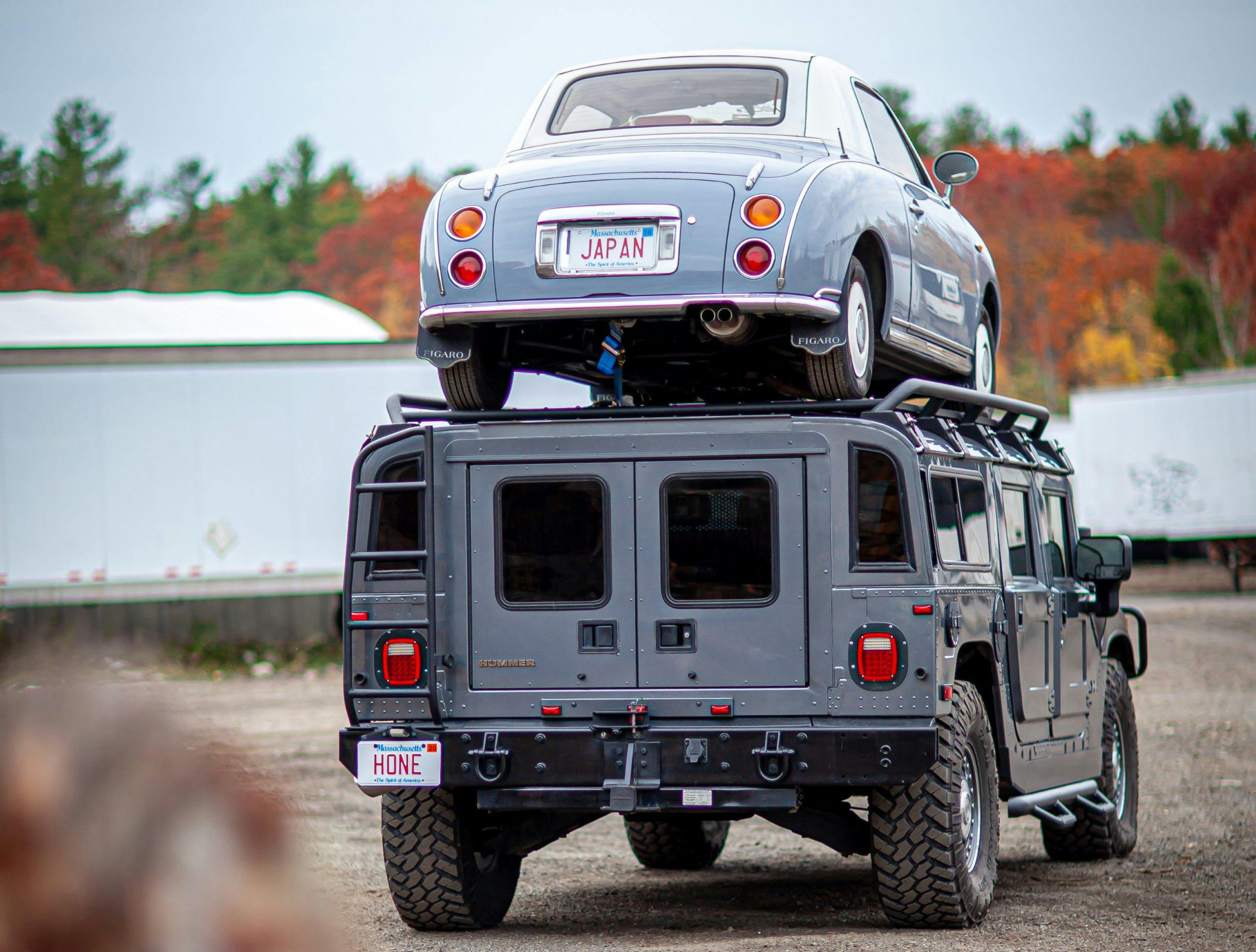With a one-ton roof rack, your Hummer can tote around this adorable Nissan
Overlanding is all the rage these days. What is overlanding? It’s basically hiking, but with a car. Not just any car, of course. For proper overlanding one needs a specifically prepared 4×4 vehicle. That obviously doesn’t just happen overnight.
The process of picking just the right accessories for vehicle protection, increased off-road abilities, recovery, and (theoretically, at least) camping takes huge considerations, deep research, and professional installations. And, of course, an Instagram account to tag all the makers of the equipment in hopes of sponsorship — or at least the appearance of sponsorship. After all, these trips won’t pay for themselves.
An essential component of a proper overland vehicle is the roof rack, preferably the flat platform kind. Roof racks are primarily needed because they look really cool, giving the rig a taller stance and outdoorsy feel. The secondary purpose of a roof rack is to actually attach stuff to it. And the amount of accessories that can be attached to a platform roof rack is mind boggling.
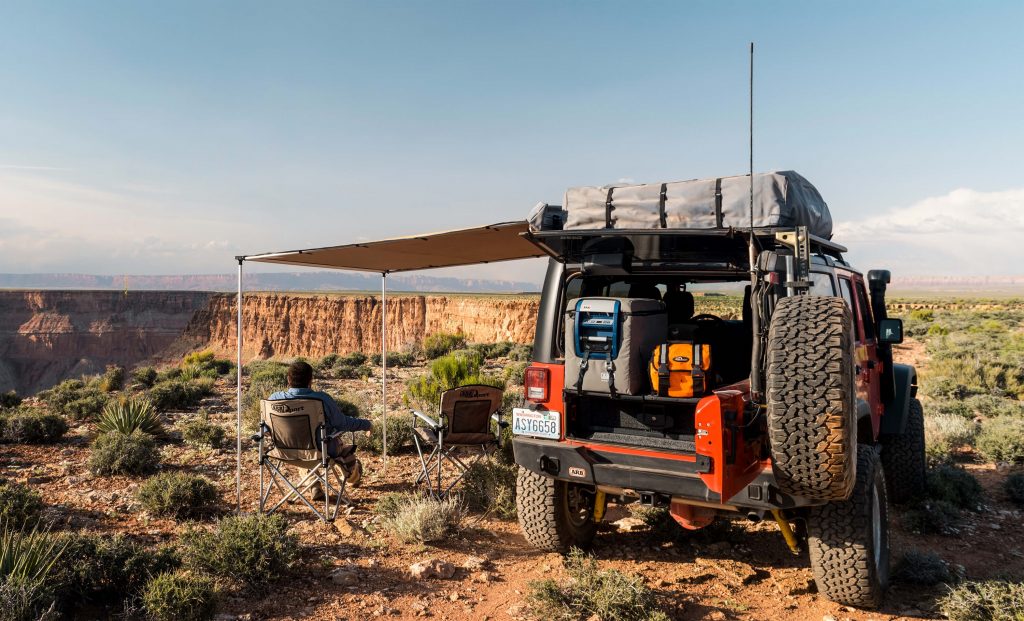
The flat design of a platform rack is extremely helpful for roof-top tent (RTT) installation as it offers a multitude of mounting points and distributes the weight throughout a larger area than a set of cross-bars would. Add an awning to that, you can protect your cooking area from rain or sun; grab some chairs and a grill, and your basic overland camping setup is done.
Those not adding an RTT have the options of carrying other overlanding essentials. A high-lift jack is basically a must have for lifted vehicles with bigger tires. But those jacks are bulky and potentially dangerous to mount inside the vehicle. A set of brackets will allow a safe mounting of a Hi-Lift jack to a roof rack. Traction pads are essential recovery tools. Sliding them under slipping wheels allows for instant forward movement—you’ll look forward to getting stuck, just so you can show them off. They also serve as vehicle leveling pads during camping. But those too are bulky, and mounting them to a rack allows for easy access and frees up interior space.
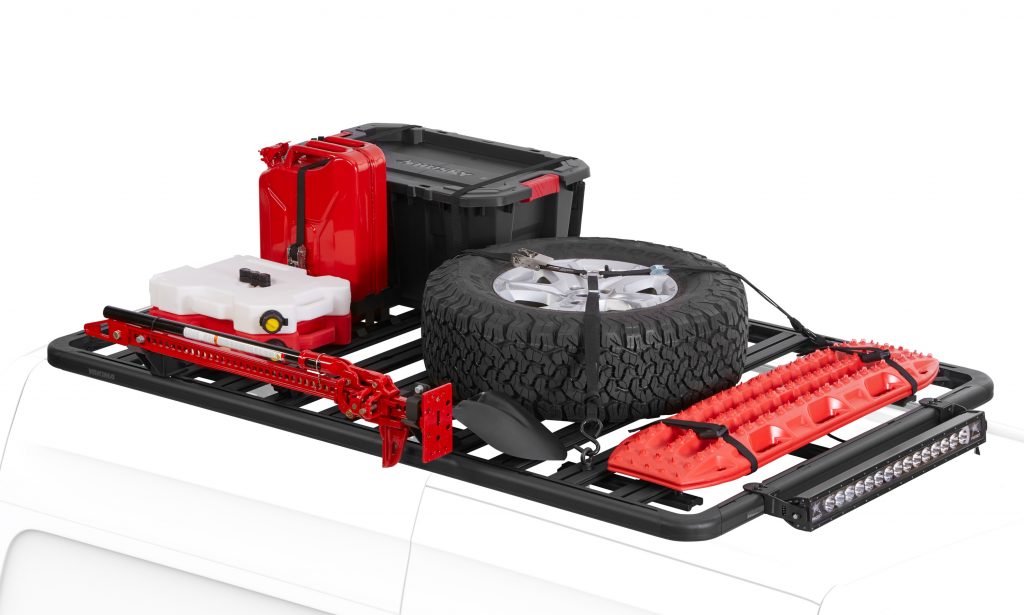
With those items bracket-mounted to the sides of the rack, there is still a lot of space for other gear. Many who have unwisely selected tires so big that the spare tire does not fit in the factory space choose to mount their 100-pound spare wheel on the roof, a decision that should be questionable at best. Exploring the great unknown Seattle suburbs may require one to carry a Jerry can with extra gas. Brackets for Jerry cans and various canisters and boxes are widely available. If you use the space wisely, there will be space available for other goodies.
Those roof racks also serve as an excellent mounting place for other mandatory overlanding accessories such as off-road lights. These can vary from spot lights to curved LED bars that can illuminate a stadium. Don’t forget your ax and shovel; you’ll need those. Overlanders who add a CB radio antenna to their racks should ensure proper grounding and SWR tuning—both essential when communicating with your buddy who was dumb enough to get stuck in the same puddle as you.
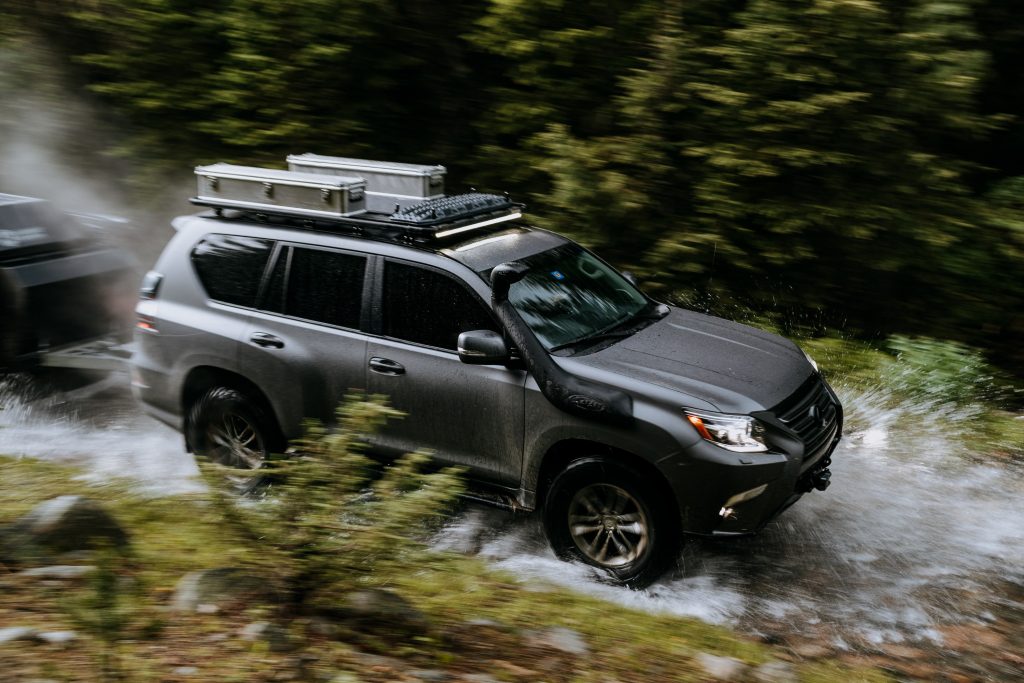
With all this added equipment come several concerns. The first one is that of load capacity. Those can be divided into static and dynamic loads. Obviously no one is going to go rock climbing with 270-pound Jimbo sleeping in the 200-pound RTT. Jimbo should be considered a static load only. Static load capacities are much higher than dynamic ones. Final load capacities are limited by the rack mounting brackets or the rails the rack is attached to. Vehicle roof strength, despite being very high on modern vehicles, needs to be considered. Finally, common sense should prevail because strapping a lot of weight to the roof raises the center-of-gravity, which has negative implications on any kind of driving, be it highway or an off-road trail.
Despite all of that, rack companies constantly compete with each other over whose rack is the strongest or has the highest capacity. Silly numbers translate into sales, so this is fierce. A friend of ours at Ace Performance, recently had one of his clients order and install a Predator Search and Rescue roof rack for his Hummer H1 Wagon. Predator says the rack has capacity of around 2000 pounds. The owner of the vehicle and the guys at the shop just had to test that capacity. Since they didn’t have 80 gold bricks laying around, they chose the next heaviest thing they did have that would also fit on the rack.
The 1991 Nissan Figaro, the Hummer owner’s other vehicle, was the obvious choice. Loading was another issue, however, as nobody in the shop was strong enough to clean and press the Figaro onto the roof of the Hummer. But necessity is the mother of invention. An old construction area nearby had just enough level irregularities to allow an elevation of a flatbed tow truck to the height of the Hummer’s roof. Sliding the bed backward allowed for easy driving of the Figaro from the flatbed onto the roof rack of the Hummer. The result was spectacular.
Once the 1800-pound Figaro was on the rack and strapped in, the shop took it for a drive. As an extra precaution, one person sat in the Figaro pressing the brakes. The big H1 didn’t seem too fazed with the extra weight. The rack held its own, too. All of which seems sort of anti-climactic. Perhaps next time they can find some railroad rails, which at 132 pounds per yard could be denser than the little Nissan.
Jokes aside, platform racks can substantially expand the functionality of many vehicles. They allow us to carry more things or bulkier things. For instance, I have it set up so I can carry a cargo box and a bicycle mount on the roof of my 4Runner, but I’ve also used it to move a couch. Careful consideration should always be given to orientating and strapping objects on the roof of any vehicle. Once underway, expect your vehicle to behave differently and the gas mileage to drop. And your rig will look so cool with a proper rack on it!


